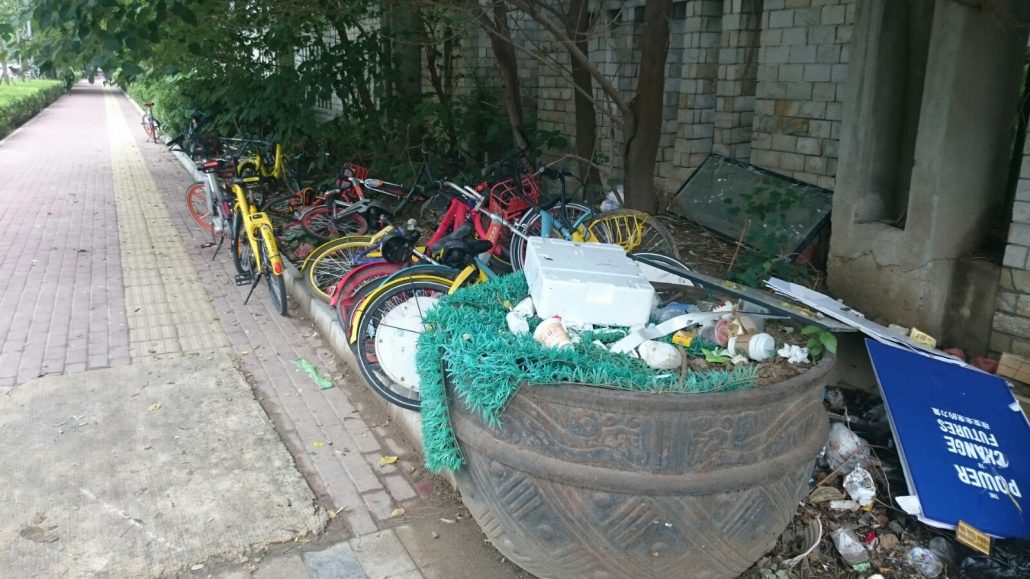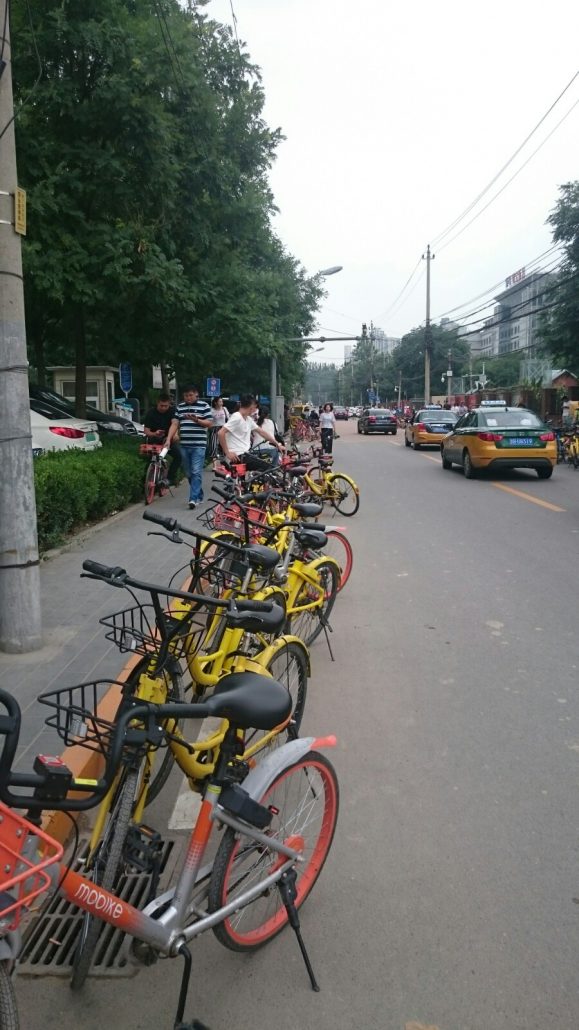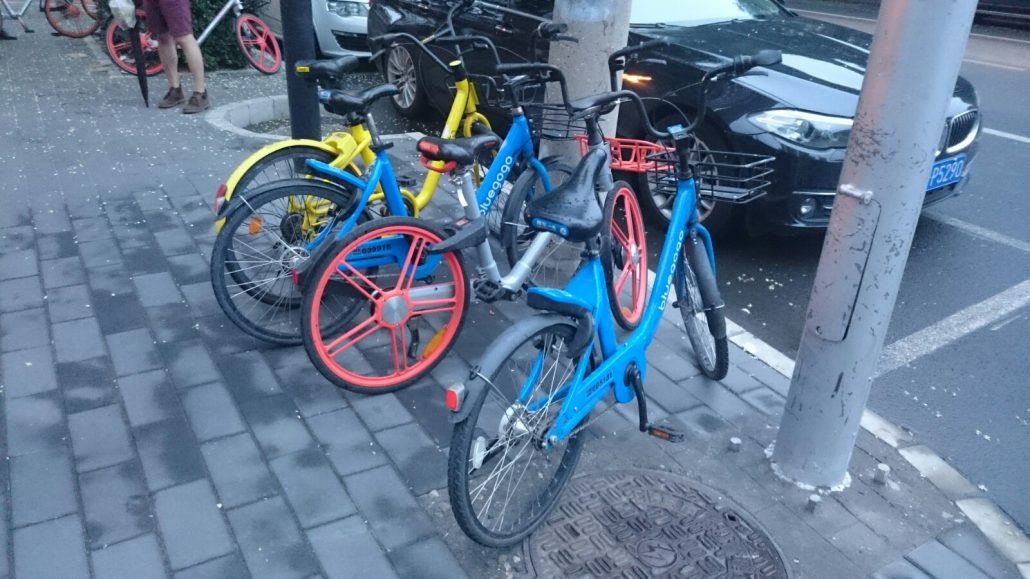Over the last few years, China has seen tremendous growth in dockless bike share. The new bike share system comes as a response to some of the challenges that traditional station bike share systems have faced in terms of convenience and flexibility for users and a lack of funding. Dockless bikes, which rely heavily on smartphones and GPS technology, can be parked anywhere, taking the bike share industry to a new level of efficiency and scale. Armed with hundreds of millions of venture capital dollars, the private dockless bike share companies blanket the Chinese cities with millions of new bikes. Most of them are not subsidized by the government, enabling them to avoid lengthy government procurement process and to enter the market faster and easier.
That said, unregulated entry into the market has brought a number of challenges. Large numbers of wasted bikes, vandalism, traffic violation, and bad parking practices are plagues to the Chinese system. Amidst the criticism, can a city improve its transportation with dockless bike share? If so, how can a city best take advantage of the technology and the new business model to enhance user experience and provide better mobility services? The general consensus is yes, only if cities integrate the system into its broader transportation network and adopt policies to regulate dockless bike share.
Integrate dockless bike share into the transportation network
According to the Chinese State Information Center, there are now over 16 million dockless bikes in the country. In Shenzhen, more than 500,000 shared bikes have entered the market, replacing an estimate of 10 percent of the car trips. Dockless bike share fills a gap in service that maximizes efficiency and increased connectivity for users. The story is similar in other major cities. In Shanghai, the average daily trips are 1,000,000. As stated in a whitepaper published by Mobike, the largest bike share operator in China, [1], proving a case that it is generally used to improve last-mile connectivity. While the ridership is strong, the integration between metro stations and bike share contributes to a more seamless transportation network in Shanghai[2].
Another aspect of integrating bike share into the larger public transport network and to make it a frequently-used mode of transportation is encouraging the regular use of the sharing system among commuters. Several systems in the US and Canada, discounted corporate rates of bike share services are offered to employees as a commuter benefit. In China, a flexible, per-trip price has been offered to the users by the dockless bike share systems. Mobike offers a monthly pass to the users with unlimited rides over the time frame. A few private dockless companies also encourage good user behaviors through a scoring system. Users are rewarded with high scores for behaviors like parking a bike near metro stations or bus interchanges and consistent use.
In addition, there are things cities can do to use their regulatory capacity to encourage this integration process.
Regulate dockless system and coordinate with bikeshare operators
Seattle is the first major city in North America that permits private, dockless bike share to operate citywide. In July 2017, the city released a comprehensive permit structure to manage dockless bikes, specifying designated parking areas for deckles bikes[3]. Similarly, Chinese cities began exploring options to regulate bike supply, manage public spaces and ensure road safety. Jinan is one of the model cities in China to improve parking near public transportation stations. According to Mobike big data analysis, 6,000 bike spots were pre-designated before the dockless bikeshare operators dropped the bikes on the streets. 15,000 additional parking spots were provided within one year[4]. In Guangzhou, 700,000 bikes on streets led to massive piles of abandoned bikes and unregulated bike parking cluttered sideways by May 2017. Facing this challenge, the government issued technical guidance for dockless bike share, including explicit setting conditions and installation requirements for parking facilities, management of unified electronic fence and government supervision platforms[5].
While more and more cities coordinate with operators to manage the dockless bike share systems by employing a regulatory mechanism, a balance is needed. On one hand, operators need the flexibility to innovate and provide better services for users while complying with local regulations. On the other hand, cities demand the private companies share the ridership data and adopt policies to regulate the bike share operations. According to a whitepaper produced by WRI and Mobike, the current dockless bike share system gathers over 30 TB of data daily from over 8 million smart bikes equipped with GPS and IoT connected devices[6]. By holding the operators to key performance indicators to keep them balanced and accessible, cities can better evaluate how bike share systems can help to achieve long=term goals in promoting sustainable mobility.
In a nutshell, cities and operators should work together on establishing operation objectives, adopting policies and innovating business models to see how dockless bike share can be best deployed and managed citywide. Having the regulatory mechanisms in place is essential in yielding more successful bike share system.
[1]Bike-sharing and the city, April 2017 http://www.fietsberaad.nl/library/repository/bestanden/Mobike_White_Paper.pdf
[3]Bike Share Permit Requirements, June 2017 http://www.seattle.gov/Documents/Departments/SDOT/BikeProgram/BicycleSharePermitRequirements.pdf, more information on how Seattle evaluates the dockles bike share pilot projects can be found here.
[6]How cycling changes cities – insights on how bikesharing supports urban development, January 2018 https://mobike.com/global/public/HowCyclingChangesCitiesMobike.pdf
Author: Yiqian Zhang





